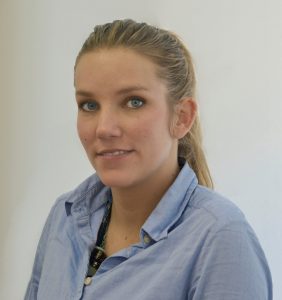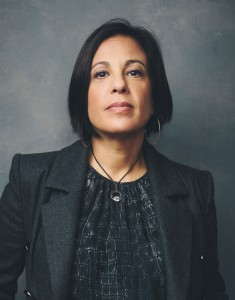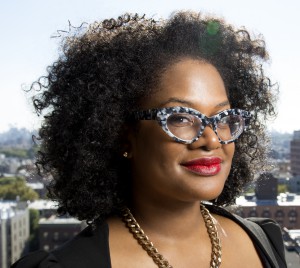
Technology disrupted: Meet 11 women leaders changing the innovation ecosystem
There’s disruption afoot in the world of technology and women are at the heart of it.
Woman entrepreneurs are building the next generation of new companies on the ground with support from women who are driving technology at the top levels. In recognition of International Women’s Day, March 8, these entrepreneurs and business leaders share their playbooks for rethinking the innovation ecosystem.
Bust the myths
It’s no secret that today, women are underrepresented in high-growth entrepreneurship. Less than 5 percent of venture capital investment in startups today goes to women chief executive officers, and less than 5 percent of VC partners are women. Many see the world of high-growth entrepreneurship as one that needs to be reconfigured to ensure that women are included, thrive and contribute to innovations that solve today’s complex problems.
“There is an opportunity to disrupt the high-growth ecosystem by redesigning it from the ground up,” says Sharon Vosmek, CEO of Astia. For nearly 15 years, Astia’s 5,000-plus members and partners globally (including Microsoft BizSpark) have provided select, high-growth companies with access to capital, expertise and executive leadership development.
“The myth of meritocracy is one of the strongest held myths in entrepreneurship,” says Vosmek. “I see the work of Astia as (a place where) assumptions are thrown out the door and myths are busted wide open.”
Low investment numbers shouldn’t stop women from learning how to build and pursue great, daring things that fuel the technology industry as well as economic growth, say women in all areas of the industry. Some women see the numbers as a challenge; others see them as a way to bust the myths that claim women aren’t up to the challenge of taking on the technology industry.

“Don’t think of yourself as a woman, just an innovator,” says Bernadine Brocker, CEO of Vastari, whose all-female team connects collectors and museum curators using the cloud. “We have no disadvantages and it’s just as tough for us as it is for any entrepreneur. The glass ceiling is only there if you believe it is.”
Rush in early
Popular blogger and co-founder of the Women’s Entrepreneur Festival, Joanne Wilson is blazing a trail by flipping the numbers: 70 percent of Wilson’s 70-plus startup investments in the last nine years are woman-led, and 30 percent of her investments have been first-dollar in.

“I invest early, so I invest in people,” says Wilson. “I look for intelligent, hungry, thoughtful entrepreneurs who I believe will be able to execute on the vision they are working on.”
Should women put their lives on hold to bring their business dream to fruition? Wilson says absolutely not. “We have been figuring it out for thousands of years how to work, have families, run the farm, make the fire and churn the butter. It is the same thing now just different content. Embrace both. It will make you a better entrepreneur.”

“There is no reason women can’t rush in early and be part of setting the pace as new technologies evolve,” adds Jennifer Whaley, CEO of U.S.-based Pose a Pet, which developed an application to help save shelter pets. She started the business with a simple idea using her smartphone, then discovered that technology could potentially catapult her little idea into an international tool for shelters worldwide.
Through the Microsoft’s BizSpark program, which supports startups as they grow, Whaley gained free access to a variety of technologies that have allowed her business to expand far beyond her initial dreams. At first overwhelming to her, she now sees technology as the path to building her photography skills into a powerhouse rescue solution for animals.
Be an agent of change
Loulou Khazen Baz is the founder and CEO of Nabbesh, a hot startup that connects businesses with freelance talent in the Middle East and North Africa. Her business is the only one of its kind in these regions, and she herself is somewhat of an anomaly in both cultures due to her driven dedication to her business.

She sees women as being agents of change in all types of technology because they can communicate well and can typically zoom out to see the bigger picture of how a business fits into a particular community or region.
“Women are capable of anything,” she says. “In technology, we have a talent for seeing things differently than men do and using our perspectives to create new views for the world. We just need to keep making our voices heard.”
Think big
In advising women to dive in early and boldly, Khazen Baz, Whaley and Wilson are not alone. The earlier women become adept in technology basics, the more successful they are likely to become as technology changes. Those basics could lead you to biotechnology, digital currency, nanotechnology, robotics and online work environments, which are all part of the future.

“Women entrepreneurs should learn how to build, big audacious, things. I think this starts very early. Buy young girls (engineering game) Goldieblox instead of a doll,” says Kathryn Finney, founder and Managing Director of digitalundivided (DID), a social enterprise that finds, supports and trains urban tech entrepreneurs. In 2013, Finney received the White House “Champion of Change” Award for her work increasing inclusion in the tech industry.
Which technologies should ambitious entrepreneurial women jump into now? The connected home, driverless cars and other assisted technologies whose growth is driven by the trends such as machine learning, robotics, continued advances in mobile technologies and automation.
Numerous current industries are ripe for disruption, too. Art, finance, biotechnology, engineering, online services and health are all areas that women should explore from a technical viewpoint, agree the entrepreneurs.
Get creative
Kay Koplovitz is a serial big thinker who created the model for cable network television. She credits an early lesson in how to conduct a winning negotiating style as the best advice she ever received.

In her current work as CEO of investment firm Koplovitz & Co. LLC and leadership of Springboard Enterprises, an organization she co-founded that has fostered the investment of more than $6.6 billion in women-led startups, Koplovitz sees a clear pattern of strategies which take a woman from big idea to big reality.
“Above all, develop clear and strong communications skills. They are needed to sell your product or service and needed to raise capital,” she explains. With them, you can attract the top talent you need and build a network of expert advisors.
Koplovitz adds that women should not compromise on the talent they hire. “You need it to carry you far. You also need to know your financials cold, because you’ll be expected to speak articulately about them to demonstrate your command of the business metrics.”
Diana Paredes is the founder and CEO of the London-based Suade, a regulatory management platform designed to prevent the next financial crisis. She believes women sometimes sell themselves short when it comes to launching a business. Failure, which is a natural counterpart to winning, is part of the overall journey for any entrepreneur.

“The idea of failure from people who want to start a business versus those who don’t is that there is no real failure. I’m always learning! Put one foot in front of the other and keep walking; successful entrepreneurs see new ways to learn each time they experience a setback,” she says. “If you feel confident enough to manage a business, you can manage a business in anything – not just a field that’s more natural for a girl. It’s so much more about running a business than the business itself.”
While limited resources might have slowed some women from entering the startup lane they also have led today’s female entrepreneurs to developing creative methods for starting and maintaining a business for the long-term win.

“When your resources are limited, you have to be very creative in order to achieve your goals and always be thinking out of the box,” explains Sally Buberman, co-founder of Wormhole IT, an interactive, online education company based in Argentina. “I never take a no for an answer and try to find a different path to make things happen. For example, we were looking for market research in order to better understand our customer’s profile and we had no money to pay for it. I used my negotiating and communication skills to convince the company doing that research to give us the document for free.”
Seek feedback
Gina Bianchini is founder and CEO of Mightybell, a software platform that helps companies create specialized professional networks for their target markets and customers. She is a firm believer in the power of feedback, to support rapid learning and iteration.
“Never be afraid of feedback,” Bianchini says. “Seek it out, embrace it and then do something about it. It’s the greatest gift that anyone can give you.”

Other female entrepreneurs agree constructive feedback is a gift for any business owner. Business acumen, along with the ability to stick things out, trust your own instincts, accept constructive feedback and ignore the naysayers, are all key traits women innovators share.
“I don’t think of occurrences as mistakes, but as learning lessons,” says Brocker. “We are constantly making mistakes, because we are trying to disrupt an industry that is quite stuck in its ways.”
The best way to deal with disappointment, she feels, is to zoom out. “Your problems look a lot smaller in context of the whole world. Remember, everything is relevant. If you are doing what you love every day, it isn’t a failure at all!”
Bianchini recommends that every entrepreneur write down a list of 10 goals to help keep a focused eye on things. Phrase them in the present tense with a general target date, starting with the main goal at the top. Then add other specific, supporting goals in the same format.
“This technique seems to attract the people, opportunities, ideas and resources that realize a set of probable goals,” she says. Her team uses this focused approach daily.
“Stop questioning yourself and just do it,” Whaley adds. “If it doesn’t work out, you’ll still be ahead from the experience. Don’t worry about what you don’t know; just keep working and learning. As long as you keep going, you’re making a difference.”
To learn more about women innovators, check out these podcasts and videos:
Microsoft for Startups: (Part 1) Women Building the Future – An Interview with Tereza Nemessanyi
Microsoft for Startups: (Part 2) Women Building the Future – An Interview with Bernadine Brocker, CEO of Vastari
Microsoft for Startups: (Part 3) Women Building the Future – An Interview with Diana Paredes, CEO of Suade
Microsoft for Startups: (Part 4) Women Building the Future – An Interview with Jennifer Whaley, CEO of Pose a Pet
Microsoft for Startups: (Part 5) Women Building the Future – An Interview with Luan Cox, CEO of Crowdnetic
Microsoft for Startups: (Part 6) Women Building the Future – See how UAE’s startup Nabbesh gives opportunities to women freelancers.
Lead image credit: Getty Images














